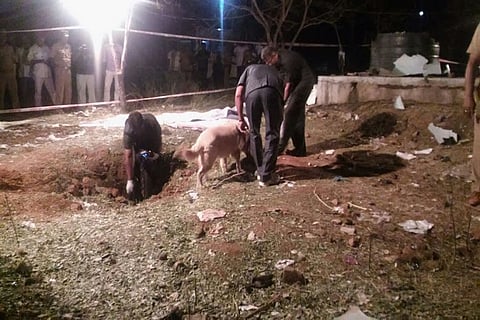

It’s not every day that a volatile meteorite shower happens, but it’s not unheard of either. Multiple instances of meteorite showers across the country have been reported over the years. The most recent one was however tragic, and has led to much intrigue. Due to an explosion, believed to be a result of a meteorite hit, Kamaraj, a bus-driver at the Bharatidasan Engineering College in Vellore died. There were shattered glass windows and windshields in the college campus and in houses located 5 kms away.
While it is widely believed that it was a meteorite that killed the driver, experts are divided on what the object really was. Some also say such incidents are pretty common, but that it’s the scale of the showers that matter. The bluish object which was recovered at the site has been sent for testing and a small crater measuring 3-4 feet in depth and a radius of 10 metre has been identified.
Dipankar Banerjee, a professor from the Indian Institute of Astrophysics, says that the chances of it being a meteorite were dim and that it could just be space debris, or part of a broken satellite that managed to enter the earth’s atmosphere.
Last February, many parts of Kerala witnessed a ‘fireball’ in the sky accompanied by minor tremors. Gujarat witnessed a meteor shower in 2006 which was far less terrifying for locals and lit up the sky. Maharashtra’s famous Lonar Lake is, in fact, as a result of a crater left by a huge meteor in the Pleistocene era and by far, the biggest meteor crater in the world. But these showers aren’t always a spectacle.
“Some are so scant, they’re hardly noticeable on any radar,” says Dipankar Bhattacharya, a senior Professor at The Inter-University Centre for Astronomy and Astrophysics in Pune.“It was most likely a freak accident, he probably happened to be in the way of a larger meteorite.”
Unless the meteorite is far too enormous in size to permeate the earth’s atmosphere, burning up and gaining momentum as it approaches the earth’s surface is very likely. In these cases, says Bhattacharya, they can only be detected a few seconds before they hit the earth.
The American Meteor Society publishes a calendar of meteor showers - and a clear indication of a possible meteorite shower between February 1 and 10 was mentioned. “Detection is hard, especially when most showers are of a negligible size. We don’t have any specific hardware to detect this either,” says Bhattacharya.
So what are the odds of space debris, or a broken piece of satellite that was once floating around, landing up crashing into the earth? There’s better detection and tracking technology for space debris or pieces of a satellite. “If it’s large enough, we can even detect it earlier in time and make it deviate from its path towards the earth’s surface. So no chance, honestly,” says Bhattacharya.
Amateur science geeks can well recall this experiment - tweaking with FM radios to catch dormant signals. Bhattacharya says that meteorites give these same signals, “But they're scattered and harder to track. Optical telescopes normally do the trick to detect the scale of these showers, but since the incident happened during the day, we probably had little luck."